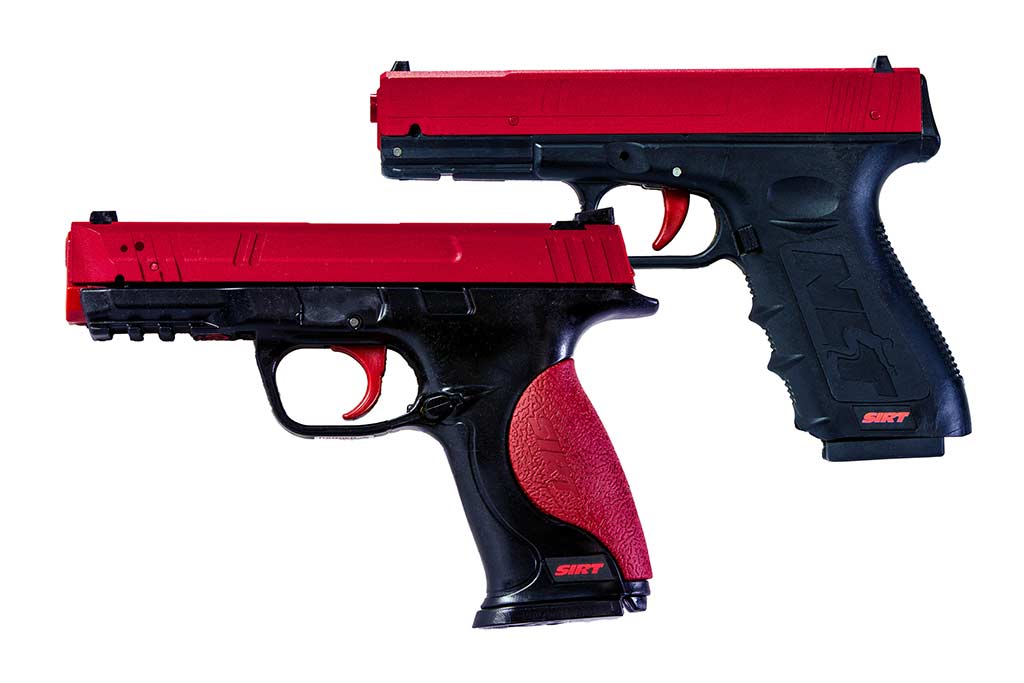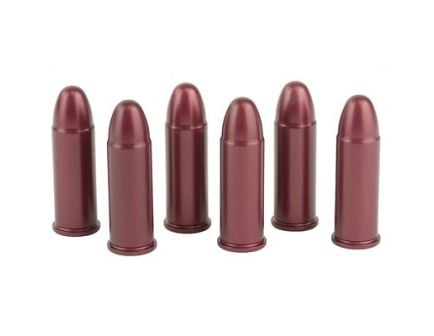Gun instructors will tell you that shooting is a perishable skill. If you don’t practice, you will gradually lose your aim. But even if you can find ammunition in today’s market, you will find it at prices that don’t encourage much practice. Even those of use who reload ammunition are having a hard time finding bullets and primers due to the increased demand coupled with decreased manufacturing from the 2020 shutdowns.
How can you keep your shooting skills sharp without running through all your ammunition? Four options stand out:
- Dry Fire
- Training Apps
- Laser Training
- Snap Caps
You can mix or max these four styles of ammunition-free practice. In addition to saving ammunition, you will reap a number of other benefits:
- You don’t have to leave home
- You don’t have to pay for access at a shooting range
- You won’t need eye and ear protection
- No noise
- Enhanced safety
- You won’t develop a recoil anticipation flinch
- Some methods measure your progress for you
- You get to buy cool stuff
- One purchase can be used over and over
| Method | Dry Fire | Training Apps | Laser Training | Snap Caps |
| Equipment | Just your gun | Gun, Device, Smart Phone | Replica Gun | Gun, Snap Caps |
| Cost | No Extra | High | High | Low |
| Complexity | Low | High | Medium | Low |
| Comments | Nothing to buy | Lots of Feedback | Basic Feedback | Protects Gun |
Dry Fire
The simplest method, which requires no equipment other than your gun, is dry fire. Because you are using a real gun, you must observe the four safety rules.
- Treat every gun as if it is loaded
- Never point a gun at anything you are not willing to destroy
- Keep your finger out of the trigger guard until you are ready to shoot
- Know your target and what is beyond it
CAUTION: don’t use dry fire with a rimfire gun. The firing pin on a rimfire gun is designed to hit against the rim of the cartridge where the primer is located to make the explosion that causes your gun to fire. Striking the primer stops the motion of the firing pin. If the firing pin hits empty space, there is no reason for it to stop and you run the risk of deforming your firing pin over time.
If you have an older revolver, make sure that the hammer and the firing pin are separate pieces. The original design of the revolver had an integrated hammer and firing pin, which would suffer greatly if subjected to dry fire. As with the rimfire pistols, the old-style revolver will be damaged by dry fire practice.
The first thing to do when you dry fire is to remove the ammunition from your gun. Drop the magazine and check the chamber of your semi-automatic. Open the cylinder of your revolver and empty out each chamber.
Check again twice. Look through the chamber and make sure you see light at the end of the barrel. There is no room for error here.
Move your ammunition to another location and make the mental switch to dry firing. Focus on what you are doing.
Even though your gun is now empty, choose a target that is expendable. NEVER point the gun at a person or pet unless you are prepared to defend yourself. This is crucial because what you practice is what you will do in real life.
Practicing dry fire in front of a mirror is ideal because you can observe your stance.
Dry fire is a great way to strengthen your grip, practice drawing from your holster, and refine your aim. You can do it day or night in any location without alarming your neighbors. Just be aware of the windows. You don’t want Mrs Kravitz next door calling the police because it looks like someone is holding hostages in your house. (You remember Bewitched, right?)
Practice your one hand grip, your two hand grip, your strong hand, your weak hand, and focusing with either eye. In a real life self defense situation you might be unable to use the grip that you have practiced so diligently because your strong hand is holding your dog’s leash, or your groceries, or your child. Practice the less comfortable stances so that you have muscle memory in your favor when you have to use them.
It doesn’t take hours of dry fire for most people. Take the same amount of time that you would have spent with live ammunition at the range.
Training Apps

You can buy a small device that attaches to the picatinny rail of your average pistol or rifle and measures your shooting performance. You can use it with live fire or with dry fire shooting. There is also a version that mounts on a shotgun.
The Mantis X is one such system. It is battery powered and USB rechargeable. You slide it onto the rail and tighten it with a thumb screw. You download the app to your smart phone and the Mantis X links with the smart phone via Bluetooth to evaluate your shooting.
The versatility of the Mantis X is a blessing and a caution. Don’t get confused and forget to empty your gun if you use it indoors. If you always follow the aforementioned Cardinal Rules of Gun Safety you will be fine, but you are using a real gun with this one, so pay attention and check the chamber multiple times.
Training apps are by far the most informative of the no-ammunition methods presented in this article. With the Mantis X you have your choice of 11 modes, including open training (average score), benchmark (10 scored shots), timed shooting (with a buzzer), primary or support hand only, and several types of drills.
Your performance is measured on timeliness, trigger pull, and steadiness. This method is the most complicated and therefore takes the most time to learn, but you get more information about your shooting in return.
Laser Training

We like to use a realistic gun replica that has built-in training features to improve our shooting without using an actual gun. One such system is the SIRT pistol, which stands for Shot Indicating Resetting Trigger. If you decide to buy one, be sure to use our discount code “carla-pittman10” to save 10%.
With laser training, you choose a replica that is close to your real gun, such as a Glock 19 or a S&W M&P. The replica has the weight and shape of a real gun but you won’t harm anyone if you make an error with it. Nonetheless, you still need to observe the Cardinal Rules of Gun Safety mentioned above, because your practice becomes your reality. Handle imitation guns like the real thing to keep your safety awareness sharp.
Laser training gives you real time feedback on your trigger pull without the recoil, so you can prevent yourself from developing an anticipatory recoil flinch. With the SIRT system, you choose between the one-dot setting and the two-dot setting.
The single dot shows up when you pull the trigger, allowing you to see where your shot would hit. This is useful for improving your sighting skills. You can continue to hold the trigger and adjust your sights until the laser matches where you were intending to aim.
The two-dot setting has a dot that shows up when you initiate the trigger pull, and a second dot that appears when you complete the trigger break. This gives you an idea of the steadiness of your hand.
You can further enhance your practice with the addition of laser targets. These devices fall over when the laser hits them, so you have a visible result when you are on target.
You can also find laser targets that give you information about timeliness and accuracy. You actually turn the targets on and off by shooting them with your laser pistol.
Snap Caps

Snap Caps are basically ammunition substitutes that make dry fire easier on your gun. You insert one into the chamber of your pistol or revolver instead of a live round and then pull the trigger as if the gun was loaded. No wear and tear on delicate parts because the firing pin has something to hit and is not required to stop on its own as it is in dry firing.
Follow the Cardinal Rules of Gun Safety with snap caps because you are using a real gun. Remove the real ammunition from your gun and put it someplace else. Triple check the chamber to make sure it is empty before inserting the snap caps. Snap caps are deliberately done in bright colors to prevent confusion. If it looks like a real round to you, don’t buy that brand!
You can reuse snap caps, so don’t throw them away. Just inspect them to make sure they stay in good repair after each use. Be sure to choose the right caliber for your gun!
Recommendations
Think about what you want to accomplish with your practice. If you just need to spend more time with your gun, dry firing won’t cost anything, and snap caps are a small investment you can make to ensure your dry firing practice doesn’t hurt the gun.
If you want visual feedback, the laser method will add cues to help you evaluate your aim. You will need to invest some money in this approach, but soaring ammunition costs may justify the expense. You save on ammunition, range fees, and travel time with the laser methods and you can avoid developing a flinch.
If you want drills and hard data, go for an app that lets your smart phone deliver specific feedback and advice about your shooting style. It isn’t as expensive as you might think, so you could pay for it with the money you save not buying ammunition. It also scores points for versatility because you can take it to the range and use it with live fire.
If you don’t like the idea of handling your real gun in the house, or you can’t find a corner of the house that is free from pets and children, go the laser training route. Replicas don’t have a mechanism for actual shooting, so you know you won’t make a serious mistake while practicing at home.
Sometimes you want an actual human laying eyes on you while you practice shooting. You can enlist a buddy to give you pointers, or you can hire a professional instructor.
Watch our Double Eagle Gunworks YouTube channel for helpful information on all things gun related.


